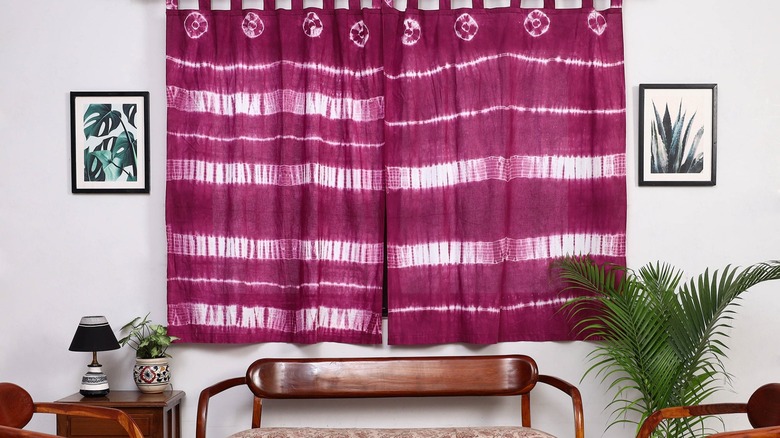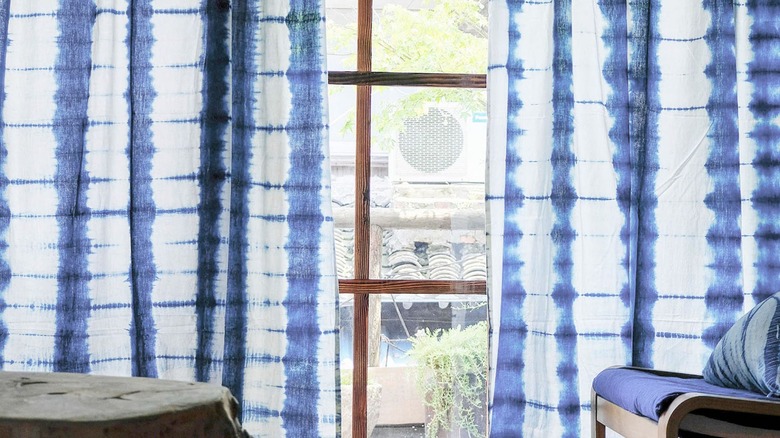Shibori Curtains Are The Textured Trend Your Windows Need
We may receive a commission on purchases made from links.
Beautiful natural indigo hues, one-of-a-kind intricate patterns, and a deep connection with millennia-spanning fabric design history – these are the traits that make the resist dyeing technique known as shibori a wonderful window treatment idea to brighten every room in your house. Whether you DIY, buy, or commission it, it's important to do so mindfully by understanding and celebrating its tradition.
Although the word shibori is etymologically Japanese, deriving from the verb shiboru, meaning "to wring" or "to squeeze," this process has been cultivated globally for, basically, ever. The colorful, fluid, kaleidoscopic shapes are achieved by manipulating fabric with clamps, ties, knots, and stitches before dipping it in dye. The bounded areas retain the fabric's original color (typically white), while the remaining space comes alive in a vibrant tint.
In Japan, natural indigo dye was especially beloved for how well it penetrated widely available fabrics like cotton and hemp, making it the signature color of shibori. Importantly, although its artisanal qualities would eventually lend it a sense of luxury, shibori first emerged among lower socioeconomic classes as a way to revamp old fabrics and add beauty to garments — the original upcycling hack! And this look is perfect for your windows.
How to style shibori curtains
Its origin and philosophy make shibori a perfect reflection of the biggest interior design trends of the last few years. More and more homeowners and designers are gravitating toward personalized places, unique, handcrafted pieces, natural elements and earth tones in order to make homes feel more warm and cozy. The unpredictable essence of the shibori dyeing process makes its patterns the ultimate bespoke addition to any space, while its complex technique emphasizes the labor, love, and craftsmanship that goes into creating each piece. Although indigo dye is now mostly synthetically reproduced, its organic roots and deep blue hues reminiscent of the sky and the sea have cemented its place among nature-inspired palettes. Besides, indigo dye works exceptionally well in plant based fibers, from linen to silk, making shibori curtains a simple way to bring biophilic design into your home and add different textures to your interiors.
Even so, bold in both color and pattern, the shibori window treatment can feel intimidating at first. It won't fit into just any space since it will inevitably become a focal point, risking clashing with other statement pieces in the room. The key is to lean into its intensity by decorating around your curtains. The flowy, laid-back tie-dye look is perfect for boho style interiors, so complement your soulful new curtains with natural wood furniture, other artisanal elements like rattan, and your favorite souvenirs and art from your travels. For a more recent trend, incorporate your shibori curtains in a Japandi design by playing with warm neutrals and minimalist furniture with a perfectly imperfect wabi sabi feel.

